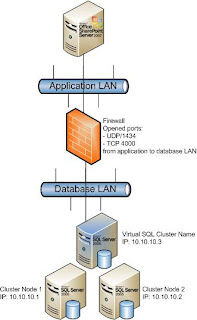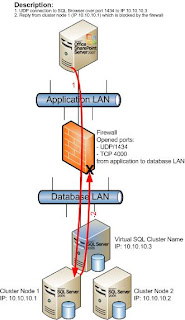A while ago I posted
a list of tools I ran into and found very usefull. Here is part 2: More usefull tools :-)
SharePoint Inspector
Using the SharePoint Inspector you can browse through the SharePoint object model, can see objects composing its structure, get their properties by reflection. This cool can be very useful when you want to check if your code does what it should do. You can use also some advanced features like activate/deactivate SharePoint features, add/remove event receivers, manage your recycle bin.
Link:
SharePoint InspectorSharePoint ManagerThe SharePoint Manager 2007 is a SharePoint object model explorer. It enables you to browse every site on the local farm and view every property. It also enables you to change the properties (at your own risk). It is a very powerfull tool for developers that like to know what the SharePoint holds of secrets.
Link:
SharePoint ManagerMS IT Site Delete Capture
Every had the unpleasant question of users if you could restore a site or site collection they accidentally deleted? The only way to do this by default is to perform a restore to a separate environment and use stsadm to extract the site and restore into your environment again. Even though SharePoint 2007 does have a recycle bin, this does not capture site or site collection deletions.
After you installed the Microsoft IT Site Delete Capture Feature 1.0 SharePoint administrators can intercept both site/web delete requests and archive the site/web to a resource local to the web front-end computer or UNC path before the site/web is removed from the configuration and content databases.
The Microsoft IT Site Delete Capture Feature 1.0 also exposes functionality allowing SharePoint administrators to send e-mail messages to the end-user indicating the site has been archived and deleted, any failure in the event receiver will generate an e-mail message to the end-user indicating that the site/web has not been deleted. The message format, text, and language are stored in a flexible, culture-independent extensible markup language configuration file.
Link:
MS IT Site Delete CaptureSharePoint 2007 Test Data Population Tool
The SharePoint 2007 Test Data Population Tool is a capacity planning and performance testing tool that populates data for testing SharePoint deployments. The SharePoint 2007 Test Data Population Tool is available as a command-line executable program that extracts information about how to populate the server from an XML configuration file.
Use this tool to populate test data for SharePoint capacity planning. Also included are some sample test scripts that can be used for performance and load testing SharePoint and Excel Services with the test data. These tools are being provided as is and there is no ongoing support for these tools.
Link:
SharePoint 2007 Test Data Population ToolSharePoint Logging Spy A lot of SharePoint 2007 environments consist of multiple servers. Each server is producing logs and in case of issues you always have to dig through multiple server logs. The SharePoint Logging Spy allows you real time diagnostics of multiple servers in a SharePoint farm using a single console view.
SharePoint Logging Spy is a real time diagnostic application for MOSS 2007 which allows a SharePoint administrator to view (and save to disk) the ULS Log & Event log entries from multiple machines in a SharePoint farm through a single console. NOTE - There is a known issue with Event Log Entries not being displayed from remote machines. SharePoint Logging Spy also allows the administrator to view the historic ULS logs on the farm using the same interface.
SharePoint Logging Spy also has a treeview which allows a developer or administrator to view the state of the current SharePoint enviroment. The Plug-in architechture allows for extensibility of the core application.
The application also provides drill downs for information regarding the thread or process which generated the log entries which are reported in the main screen. The thread and process information is collected on demand (when you click the menu) and is NOT historical therefore it is feasable that the process/thread may no longer exist when you ask for the information and you will get an empty result set.
To easy configuration there is a discovery wizard which will discover on-line servers in the farm and allow selective monitoring to begin.
Link:
SharePoint Logging SpySharePoint SUSHI SUSHI is a powerful, user-friendly SharePoint application enabling you to accomplish common SharePoint administrative and development tasks. You can think of SUSHI as a Swiss army knife for SharePoint.
SUSHI = SharePoint Utility with a Smart, Helpful Interface
SUSHI Tools
Administration Security Reports: View all sites and lists a user has access to (VERY USEFULL!!!)
Profile Images Import: Upload Profile Images and Apply them to User Profiles.
Backup: Backup a site. Restore: Restore site from backup.
Email Test: Send a test email to make sure outbound email is set up correctly.
Lists
Copy View: Copy a view from one SharePoint list to another. Meta Data: Get detailed information about metadata in a list. Move metadata from one column to another for all items in a list. And more.
Bulk List: Creation Create a large number of subsites based on a site template.
Bulk Site Columns: Create Site Columns. Import Documents: Upload entire file structures from a file share into a document library.
Sites Bulk Site Creation: Create a large number of subsites based on a site template.
Themes: Apply a Theme to many sites at once.
Link:
SharePoint SUSHI


